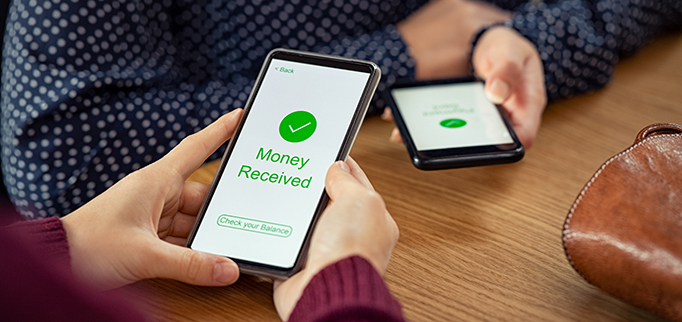Have you ever looked at your credit or debit card statement after a trip or an online purchase from an international website and noticed a small, unexpected charge? Or, while on your trip, were you charged an additional fee when making a purchase or exchanging currency? These extra amounts are different types of currency conversion fees. While they may seem minor, they can add up over time.
Not all conversion fees are created equal, and in many cases, you may end up paying more than you need to. We’re breaking down the different types of currency conversion fees, how they work, how much they typically cost, and (most importantly) how to minimize those costs.
What’s a conversion fee?
A conversion fee is a percentage added to purchases made in another country outside of where your credit or debit card was issued. This typically happens when you buy something while traveling overseas or make an online purchase with a foreign store. Other conversion-related fees can also apply when you withdraw cash from foreign ATMs or swap out your currency at a currency exchange business.
Why it matters
Small fees can add up over time with frequent international use, especially if you’re someone who travels often. They may seem nominal on smaller purchases, but if you’re buying a big-ticket item, it can also significantly increase your total.
You have a few types of currency conversion fees:
- Foreign transaction fee: Many card issuers—like credit unions or banks—charge their own foreign transaction fee for purchases made in a foreign country or processed by a foreign bank. These often range from 1% to 3%, which can be in addition to any currency conversion fees (if applicable).
- Dynamic Currency Conversion (DCC) fee: A DCC fee is where you opt for having the merchant convert the transaction to your home currency at the point of sale or withdrawal. This fee is typically around 1% of the transaction amount but can be as high as 12%. A DCC can be assessed by a payment network but can also be charged by a foreign merchant or foreign ATM operator.
- Commission or service fee: A commission or service fee is typically assessed by currency exchange services, like banks and credit unions or dedicated exchange bureaus, for converting one currency to another. Commission fees and service fees are typically a percentage of the transaction’s amount, which can range from 1% to 8%. The fee percentage often varies based on the location and convenience. For example, you can expect to pay a higher commission or service fee at an airport than you would if you exchanged your currency at a local financial service.
Foreign transaction fees
Let’s say you’re traveling in France and use your card at a restaurant. When you use your card that charges a foreign transaction fee, you’ll be charged an extra amount on top of your total depending on your issuer’s policy. If your bill comes out to $300, you’ll pay an additional $9 with a 2% foreign transaction fee and 1% currency conversion fee.
How does it work?
When you make a purchase in a foreign currency, that amount must be converted into U.S. dollars (USD) so it can be processed and reflected on your statement. This is where foreign transaction fees come into play.
Let’s say you’re traveling in France and use your card at a restaurant. When you use your card that charges a foreign transaction fee, you’ll be charged an extra amount on top of your total depending on your issuer’s policy. If your bill comes out to $300, you’ll pay an additional $9 with a 2% foreign transaction fee and 1% currency conversion fee.
What are the fees?
Card issuers and networks have different policies, but foreign transaction fees typically range from 1% to 3%. You can find this information in the rates and fees section of your card’s agreement.
What determines the total fee?
Your card issuer’s policy, the type of card you’re using, and where you’re spending determines the total fee. Some issuers charge more, while others (like travel-focused cards) may waive the fee entirely. Even online purchases from international merchants trigger these fees—so it’s not just about traveling abroad.
Understanding the range of fees helps you spot extra charges on your statement and empowers you to pick the right card for your lifestyle.
Georgia’s Own imposes a fee of 2.00% of the amount of the transaction, calculated in U.S. dollars, on all foreign transactions. A foreign transaction is any transaction that a member or a merchant completes on a Visa® credit or debit card outside of the United States, with some rare exceptions. This fee is charged because of the exchange rate between the transaction currency and the billing currency used for processing international transactions. You’ll see this on your Statement of Accounts and in your online banking history with a description of “Foreign Transaction Fee Conversion” or “International Transaction Fee.”
What about Dynamic Currency Conversion fees?
Currency conversion fees are different from foreign transaction fees and are the result of Dynamic Currency Conversion (DCC). DCC is a currency conversion performed by overseas merchants or ATM operators—often with a 3% to 12% markup.
For example, you’re still on your trip in France and need to withdraw €200 from an ATM. When you make the withdrawal, it’ll ask if you want to pay in local currency or let the ATM convert it to USD. Here’s a breakdown of that cost difference:
Withdrawing €200 from an ATM in France |
||
|---|---|---|
| DCC (Charged in USD) | Local Currency (Charged in EUR) | |
| Exchange Rate Used | 1 EUR = $1.18 (includes markup) | 1 EUR = $1.10 (payment network rate) |
| Converted Amount | $236 | $220 |
| Foreign Transaction Fee (2%) | $4.72 | $4.40 |
| Total Withdrawal Cost | $240.72 | $224.40 |
| Difference | Overpaid by $16.32 | Saved by choosing local currency |
It’s usually recommended to pay in the local currency when using your card abroad. It may feel counterintuitive, but letting the payment network handle the conversion gives you the better deal and helps you avoid inflated exchange rates from ATMs or merchants.
Commission or service fee
In addition to conversion fees charged when you use your card or withdraw cash abroad, you may also run into commission or service fees. These are charges assessed by currency exchange services—like banks or credit unions, airport kiosks, or dedicated exchange bureaus—when converting one currency to another.
How they work
- Percentage based: Many exchange providers charge a percentage of the transaction amount, often from 2% to 5%.
- Flat fee add-ons: Some add a flat fee on top of the percentage, especially for smaller transactions.
- Hidden in the rate: Even if an exchange booth advertises “no fee,” the cost is often built into a weaker exchange rate, which means you’re still paying a commission.
Where you’ll see them
- Airport and hotel kiosks: Usually the most convenient option but often charge the highest fees and markups.
- Dedicated exchange bureaus: May appear cheaper but many hide commissions within less favorable exchange rates.
- Banks or credit unions: Banks and credit unions tend to offer more reliable rates but many still apply a commission or service charge.
For example, if you exchange $500 USD at an airport kiosk with a 3% commission or service fee, you’ll pay $15 in fees, plus whatever markup is built into the posted exchange rate.
How do foreign transaction fees impact you?
Foreign transaction fees might seem small at first, but they can add up quickly—especially if you’re frequently traveling internationally or shopping on websites based outside of the U.S.
Here’s how these fees can impact you:
- Increased purchase cost: Whether you’re swiping your card abroad or making an online purchase in another currency, you could end up paying 1% to 3% more than the listed price due to conversion and foreign transaction fees.
- Reduced travel budget: On a $2,000 trip, even a 2% fee amounts to an extra $40 in fees. That’s money you could’ve spent on a meal or souvenir.
- Not reward eligible: Most credit card reward programs exclude foreign transaction fees from cash back, points, or miles earnings. So that fee doesn’t help you earn more—it just costs you more.
Being aware of these fees helps you make smarter decisions, like which card to use, how to pay, or whether to consider other alternatives.
How can you avoid or reduce fees?
The good news is with a little planning you can avoid or reduce the fees associated with currency conversion and foreign transactions. You can save by:
- Paying in local currency: Always opt to pay in the country’s native currency instead of USD. If an ATM or card reader offers to convert your purchase to USD “for convenience,” decline—it’s rarely a better deal.
- Withdraw larger amounts less frequently: If your card charges a flat fee for ATM withdrawals abroad, reduce fees by withdrawing more at once instead of making frequent, small withdrawals.
Planning and knowing how your card works internationally can minimize unnecessary charges and keep more money in your wallet.
Key takeaways:
- Foreign transaction fees are a 1% to 3% fee charged by card issuers when purchases are made in another country outside of where your credit or debit card was issued.
- Foreign transaction fees are different than currency conversion fees, which are charged by overseas merchants or ATM operators. You can avoid these by opting to pay in local currency.
- Foreign transaction fees add up over time, especially if you’re a frequent international traveler.
- You can avoid or reduce fees by making one large ATM withdrawal instead of small, frequent withdrawals.





